Sponsored Links
46 Important Information about PCER
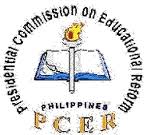 THROUGH EXECUTIVE ORDER NO. 46, President Joseph Ejercito Estrada on December 7, 1998 establishedthe multisectoral Presidential Commission on Educational Reform (PCER) that would craft a "budget feasible" program to address the concerns in equipping Filipinos with world class education.
THROUGH EXECUTIVE ORDER NO. 46, President Joseph Ejercito Estrada on December 7, 1998 establishedthe multisectoral Presidential Commission on Educational Reform (PCER) that would craft a "budget feasible" program to address the concerns in equipping Filipinos with world class education. 3. This is in line with the 10-point action plan of the Estrada Presidency, where PCER is to define a budget-feasible program of reform, and identify executive priority policy recommendations and items for a legislative agenda on education.
3. This is in line with the 10-point action plan of the Estrada Presidency, where PCER is to define a budget-feasible program of reform, and identify executive priority policy recommendations and items for a legislative agenda on education.
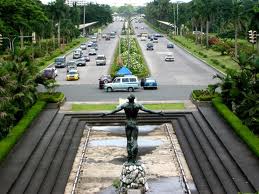 (To be specific, it is composed of representatives from government line agencies, the University of the Philippines, the Open University - University of the Philippines; public and private schools at all levels; teachers; the agriculture and industry sectors; the information technology sector; state colleges and universities; and other concerned sectors.)
(To be specific, it is composed of representatives from government line agencies, the University of the Philippines, the Open University - University of the Philippines; public and private schools at all levels; teachers; the agriculture and industry sectors; the information technology sector; state colleges and universities; and other concerned sectors.)
 5. It was headed by a Chairman appointed by the President: Dr. Victor Ordoñez(UNESCO Regional Director for Asia)
5. It was headed by a Chairman appointed by the President: Dr. Victor Ordoñez(UNESCO Regional Director for Asia) 8. According to EO 46, “The Education Committee Chairmen of the Upper and Lower Houses will be invited to attend meetings ex-officio either personally or through their representatives.”
8. According to EO 46, “The Education Committee Chairmen of the Upper and Lower Houses will be invited to attend meetings ex-officio either personally or through their representatives.” 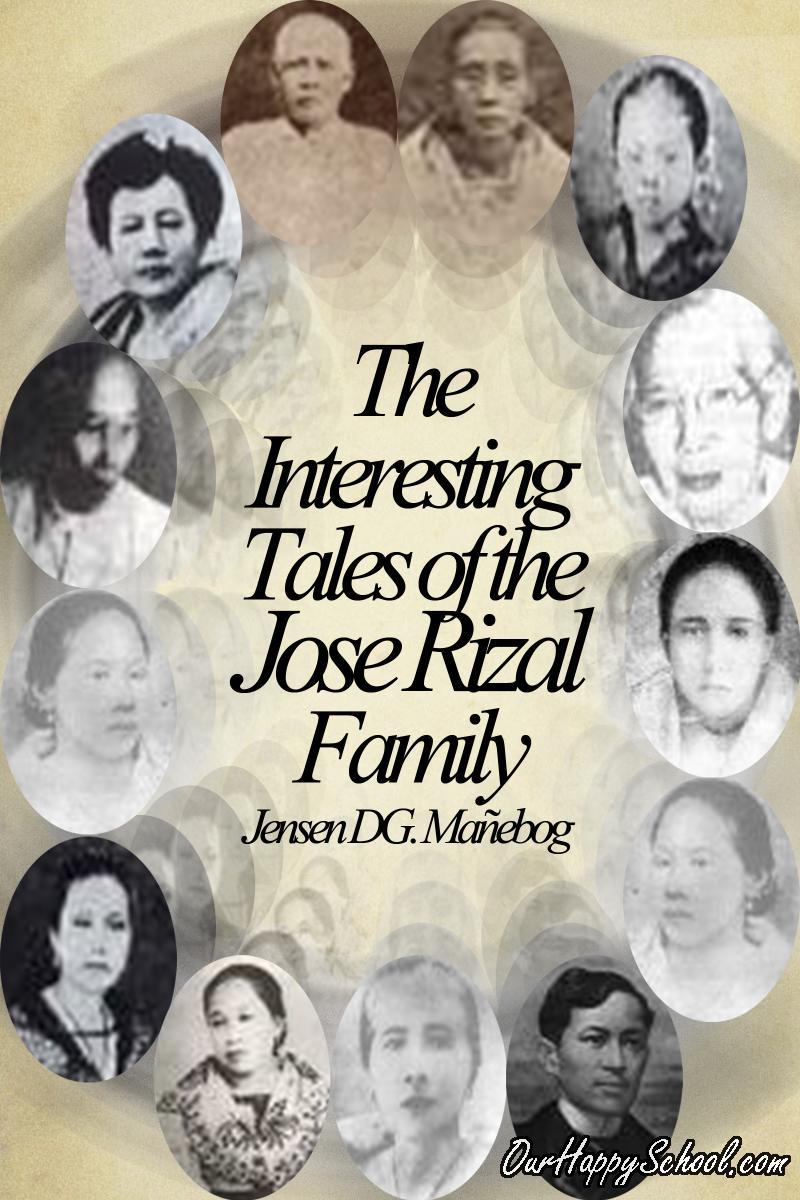 11. a) Curricula, teaching methods, instructional media, education technologies, textbooks, language policy and school calendar in use at the elementary and secondary levels, using international benchmarks.
11. a) Curricula, teaching methods, instructional media, education technologies, textbooks, language policy and school calendar in use at the elementary and secondary levels, using international benchmarks.12. b) Modernization of science laboratories, improvement of science and mathematics education and the feasibility of establishing regional centers of excellence in science education.
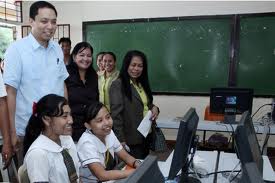 13. c) Upgrading of computer classrooms, computing facilities and internet access in all schools that meet eligibility standards for administering such programs.
13. c) Upgrading of computer classrooms, computing facilities and internet access in all schools that meet eligibility standards for administering such programs.
14. d) Expansion, modernization and standardization of our vocational and technical institutions, especially polytechnic colleges and universities.
15. e) Distance learning and continuing education programs, especially for adults and out-of-school youth, with a view towards possible eventual accreditation.
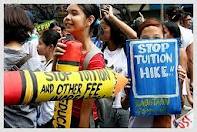 16. f) Tuition financing schemes intended to bring the effective purchasing power of students in line with the real costs of tertiary education.
16. f) Tuition financing schemes intended to bring the effective purchasing power of students in line with the real costs of tertiary education.
17. g) Programs, resources and facilities of state universities and colleges, other than UP, with the intention of rationalizing their academic offering and aligning them with employer requirements in their respective areas.
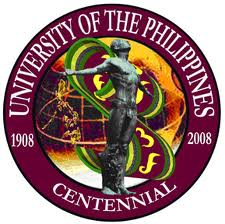 18. h) Governance, organization, programs, resources, and facilities of the University of the Philippines, with a view towards developing its flagships campus in Diliman into one of the top ten universities in Asia in time for the UP Centennial in 2008.
18. h) Governance, organization, programs, resources, and facilities of the University of the Philippines, with a view towards developing its flagships campus in Diliman into one of the top ten universities in Asia in time for the UP Centennial in 2008.
19. i) Other priority areas of concern in education that arise from the research and consultations conducted by the Commission.
 21. “The Commission will start its work upon the signing of this Executive Order (December 7, 1998), and submit its final report and recommendations to the Office of the President of the Philippines one-year thereafter.”
21. “The Commission will start its work upon the signing of this Executive Order (December 7, 1998), and submit its final report and recommendations to the Office of the President of the Philippines one-year thereafter.”
 26. a) Regular/Monthly meetings: PCER has two sets of monthly meetings: (1) a regular meeting of the Commission, scheduled every third Thursday of the month and (2) a meeting of each of the six Working Committees scheduled one after the other every last Thursday/Friday of the month. (The first six months of regular Commission meetings saw substantial brainstorming discussions on what ails the country's educational system. Likewise, a review of past surveys was done.)
26. a) Regular/Monthly meetings: PCER has two sets of monthly meetings: (1) a regular meeting of the Commission, scheduled every third Thursday of the month and (2) a meeting of each of the six Working Committees scheduled one after the other every last Thursday/Friday of the month. (The first six months of regular Commission meetings saw substantial brainstorming discussions on what ails the country's educational system. Likewise, a review of past surveys was done.) 27. b) Workshops: Two workshops were held; the first one consisting of two phases Phase A, on April 19, where the Working Committees met separately to brainstorm and identify items of reform needed in their respective area and Phase B, on April 29, where all the committee members met in plenary to listen to what each Committee had decided re possible reform measures and later identified cross-cutting areas of reform.
27. b) Workshops: Two workshops were held; the first one consisting of two phases Phase A, on April 19, where the Working Committees met separately to brainstorm and identify items of reform needed in their respective area and Phase B, on April 29, where all the committee members met in plenary to listen to what each Committee had decided re possible reform measures and later identified cross-cutting areas of reform. 29. d) Other activities: Taking advantage of the National Educators' Congress held in Baguio City on May 17 - 21, 1999, a questionnaire survey was conducted. The questionnaire that was used incorporated exactly the reform items identified as of the April 29 workshop. Three hundred thirty nine respondents participated: 22 Regional office staff (plus some Regional Directors and Assistant Regional Directors), 53 division office personnel (including the top division officials), 77 supervisors, 47 high school principals, 96 elementary school principals, and 44 teachers. Results of the survey confirmed the existence of a need for reform in the areas as identified by PCER.
29. d) Other activities: Taking advantage of the National Educators' Congress held in Baguio City on May 17 - 21, 1999, a questionnaire survey was conducted. The questionnaire that was used incorporated exactly the reform items identified as of the April 29 workshop. Three hundred thirty nine respondents participated: 22 Regional office staff (plus some Regional Directors and Assistant Regional Directors), 53 division office personnel (including the top division officials), 77 supervisors, 47 high school principals, 96 elementary school principals, and 44 teachers. Results of the survey confirmed the existence of a need for reform in the areas as identified by PCER.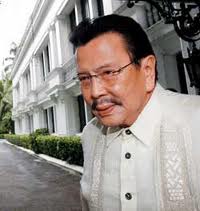 30. After 13 grueling months of extensive study,the report named, “Philippine Agenda for Educational Reform: The PCER Report”was unveiled to the public on April 10, 2000 in a turn-over ceremony held in Malacañang, with President Joseph Ejercito Estrada as Guest of Honor.
30. After 13 grueling months of extensive study,the report named, “Philippine Agenda for Educational Reform: The PCER Report”was unveiled to the public on April 10, 2000 in a turn-over ceremony held in Malacañang, with President Joseph Ejercito Estrada as Guest of Honor. 32. Some of the studies considered were the Monroe Survey (1925), the Commonwealth Survey (1936),
32. Some of the studies considered were the Monroe Survey (1925), the Commonwealth Survey (1936),  the UNESCO survey (1949), the Swanson Survey (1960), the Presidential Commission on Philippine Education (PCSPE-1969), EDCOM (1991), the Medium Term Philippine Development Plan (MTPDP, 1999), and Education Sector Study (PESS-1998) and many internet sources.
the UNESCO survey (1949), the Swanson Survey (1960), the Presidential Commission on Philippine Education (PCSPE-1969), EDCOM (1991), the Medium Term Philippine Development Plan (MTPDP, 1999), and Education Sector Study (PESS-1998) and many internet sources. 37. a. Establishment of the National Coordinating Council for Education (NCCE)—calls for greater coordination among departments (DECS, CHED
37. a. Establishment of the National Coordinating Council for Education (NCCE)—calls for greater coordination among departments (DECS, CHED and TESDA), a common approach to trans-sectoral issues such as assessment mechanism and articulation between levels, and a more harmonized approach to total education planning and resource allocation.
and TESDA), a common approach to trans-sectoral issues such as assessment mechanism and articulation between levels, and a more harmonized approach to total education planning and resource allocation.

 40. d. Establishment of a One-year Pre-baccalaureate System—this proposal recommends a one-year period between secondary education and a tertiary degree program (to bring the Philippines at par with other countries and ensure readiness of high school graduates for tertiary education)
40. d. Establishment of a One-year Pre-baccalaureate System—this proposal recommends a one-year period between secondary education and a tertiary degree program (to bring the Philippines at par with other countries and ensure readiness of high school graduates for tertiary education)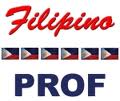 41. e. Faculty Development at the Tertiary Level—it prescribes that teachers at the tertiary level must have a Master’s degree in the field in which they teach. (Plan: to launch a nationwide system using a network of key centers of teacher training to raise the numbers of qualified teachers with Master’s degree from 30% to 70%.)
41. e. Faculty Development at the Tertiary Level—it prescribes that teachers at the tertiary level must have a Master’s degree in the field in which they teach. (Plan: to launch a nationwide system using a network of key centers of teacher training to raise the numbers of qualified teachers with Master’s degree from 30% to 70%.)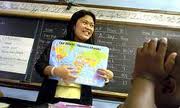 42. f. Strengthening Teacher Competencies at the Basic Education Level—empowering them in four key specific key result areas or KRAs (ability to teach reading and comprehension, initiative and creativity, training in values education, and a familiarity and use of instructional technology) through a program that is in-service, innovative, nationwide, and conducted in a decentralized manner.
42. f. Strengthening Teacher Competencies at the Basic Education Level—empowering them in four key specific key result areas or KRAs (ability to teach reading and comprehension, initiative and creativity, training in values education, and a familiarity and use of instructional technology) through a program that is in-service, innovative, nationwide, and conducted in a decentralized manner.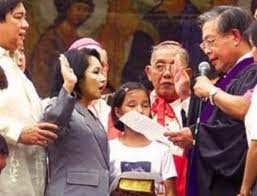 The Supreme Court declared the presidency vacant, effectively ousting Estrada from office, and Vice President Gloria Macapagal Arroyo was sworn in as president.
The Supreme Court declared the presidency vacant, effectively ousting Estrada from office, and Vice President Gloria Macapagal Arroyo was sworn in as president.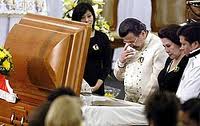 The demise of Estrada administration virtually meant the death of PCER!
The demise of Estrada administration virtually meant the death of PCER!





Add new comment